NORTH WALES COAST RAILWAY:NOTICE BOARD
Rheilffordd arfordir gogledd Cymru: Hysbysfwrdd
08 August 2016
Share on Twitter
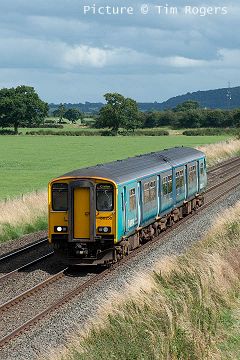
Tweets by @NWrail1
Contributions and comments are encouraged: see the Contributions Page
This list may be out of date if you are reading an archived issue. For full information visit our Calendar page.
August 2016
Sunday 21 August Railway Touring Company THE NORTH WALES COAST EXPRESS Crewe - Manchester - Holyhead (WCRC) Steam loco 45690 or 46115: Manchester - Chester - Holyhead and return
September 2016
Sunday 4 September Railway Touring Company THE NORTH WALES COAST EXPRESS Crewe - Manchester - Holyhead (WCRC) Steam loco 45690 or 46115: Manchester - Chester - Holyhead and return
Friday 30 September Great Western Society North West Branch. Steam in Black and White. Peter Spilsbury.
October 2016
Friday 28 October Great Western Society North West Branch. Railway Personnel. Paul Shackcloth.
November 2016
Friday 25 November Great Western Society North West Branch. GW Steam in S. Wales and S West. Alf Storey
December 2016
January 2017
Friday 27 January Great Western Society North West Branch. North of Preston Barrie Rushton
February 2017
Friday 24 February Great Western Society North West Branch. Group AGM
March 2017
Friday 31 March Great Western Society North West Branch. (To be announced)
April 2017
Friday 28 April Great Western Society North West Branch. (To be announced)
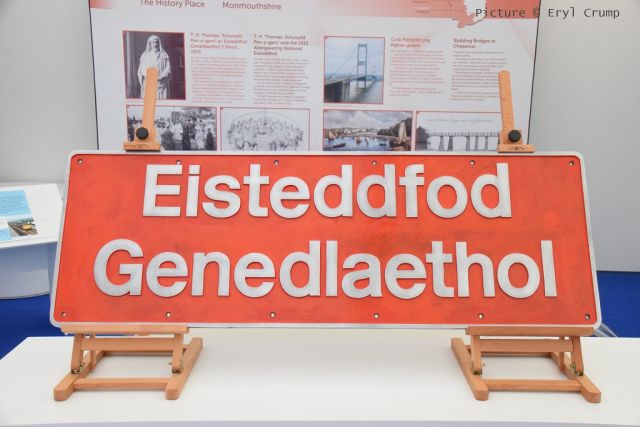
The nameplate of 37 429 on display at the National Eisteddfod, 6 August. Picture by Eryl Crump.
Eisteddfod at Eisteddfod (2)
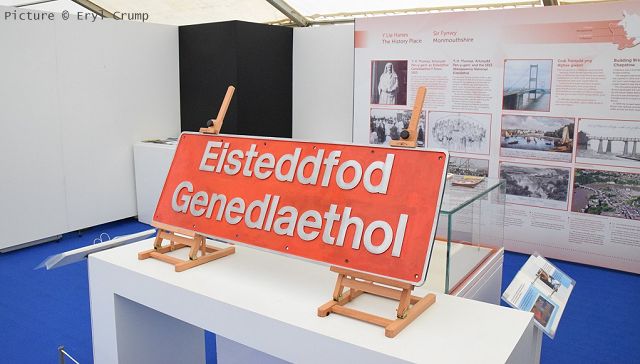
As promised, the nameplate of 37 429, saved from being auctioned by DB Cargo and transferred to the care of Museums of Wales, made an appearance at this years Eisteddfod in Abergavenny, and Eryl Crump was there to take these pictures, for which many thanks.
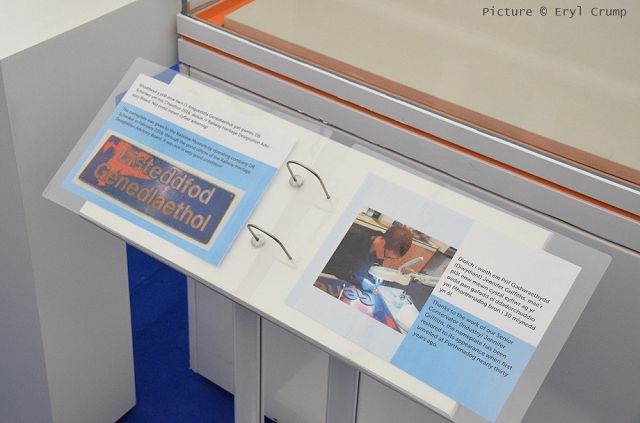
The caption explained that thanks to the work of senior conservator Jennifer Griffiths, the nameplate has been 'restored to its appearance when first unveiled at Porthmadog nearly thirty years ago.' At that time the livery was British Rail blue, and red (vermilion?) nameplate backing was standard.
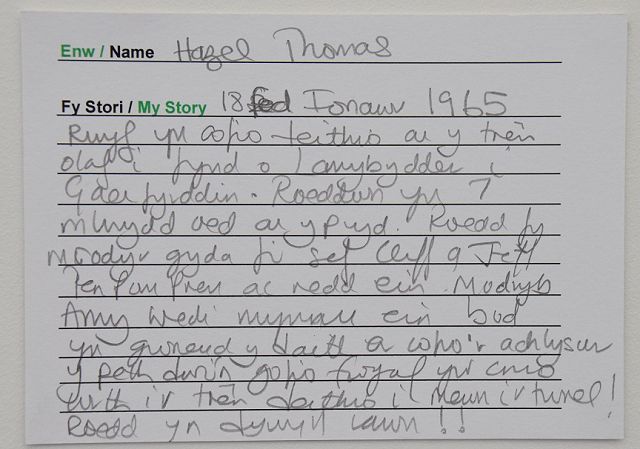
There was a request for rail related stories: this example is by Hazel Roberts. Translation by Eryl:
I can remember travelling on the last train from Llanybydder to Carmarthen. I was seven years old at the time. My brothers were with me Our Aunt Amy had insisted we make the journey and the thing I remember most is crying when the train went into the tunnel!
Freight events
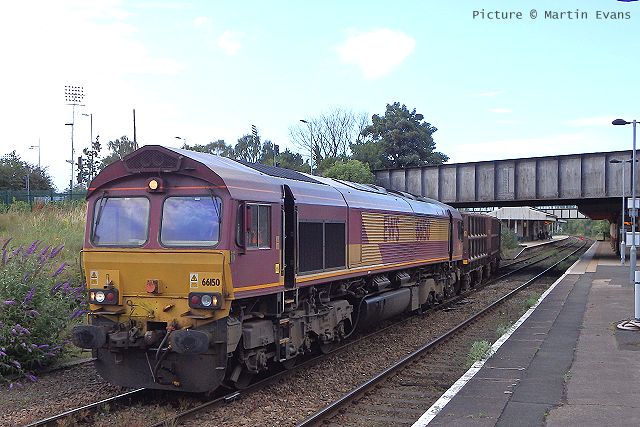
66 150 runs 'wrong line' at Wrexham to gain access to Croes Newydd loop with the Penyffordd to Warrington Arpley coal empties at 19:05 on 2 August. Picture by Martin Evans.
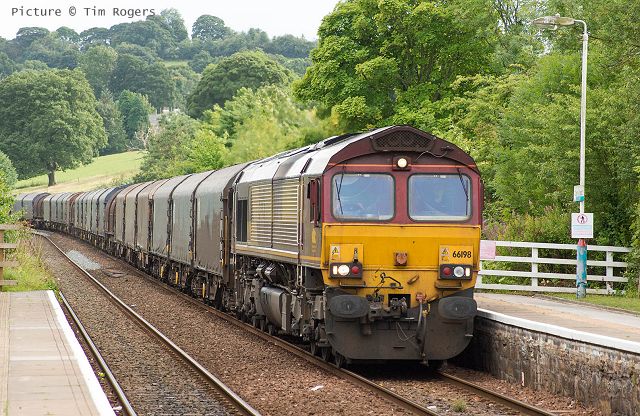
Cefn-y-bedd, 3 August. 66 198 with 6M86 10:29 Margam to Dee Marsh steel (Tim Rogers)
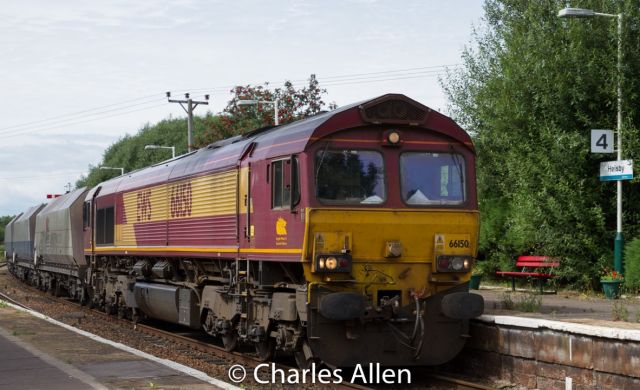
66 150 again, with our first picture of a train serving the new sidings at the Encirc (formerly Quinn) glass factory near Ince and Elton station. Charles Allen was at Helsby to see the returning empties for Warrington Arpley sidings on 5 August, running 118 minutes early at 12:16. This train runs twice weekly, leaving Middleton Towers (Norfolk) on Tuesdays and Thursdays, spending the night at Arpley yard, and arriving at the works at 07:39. Use of hopper wagons enables a very quick turnaround.
Photographing the Lostock hoppers - note by Richard Boyd
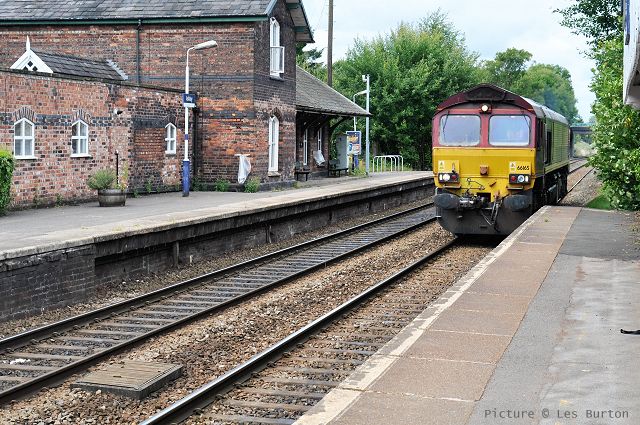
I was interested to see the item by Les Burton (25 July issue, picture repeated above) about a light engine appearing when the Tunstead - Lostock 'hoppers' was expected. For some time now, the loaded workings travel out early on Monday / Tuesday / Wenesday / Friday / Saturday mornings and return empty on Monday / Tuesday / Thursday / Friday / Sunday evenings. In between, there are Lostock - Peak Forest and return light engine workings; times vary off Lostock and but it's normally 15:31 off Peak Forest, except on Sundays when it's earlier.
Apparently this is because DB Cargo aim to keep the wagons at Lostock Works for as long as possible when not in use. [We believe that siding space at Peak Forest and Tunstead is a premium. - C.H.] Traction is usually a Class 60 but this is only necessary for the loaded outward working; a lesser beast such as a 66 can handle the return.
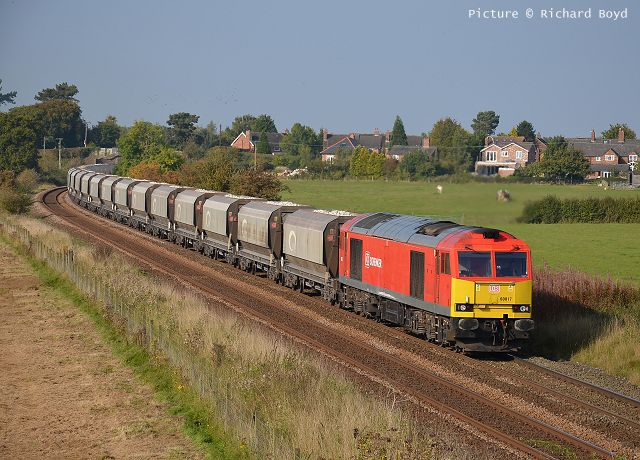
Lesís picture shows 66 165 travelling through the Chester-bound platform; my own personal records have that loco on 24 July's 14:16 Peak Forest Up Sidings to Lostock Works light engine movement, which will be what Les saw. The unfortunate consequence of these revised workings is that is now very difficult to obtain pictures of the Lostock train in Summer and impossible in Winter. Above is picture of 60 017 passing Ashley in happier times, 4 October 2015.
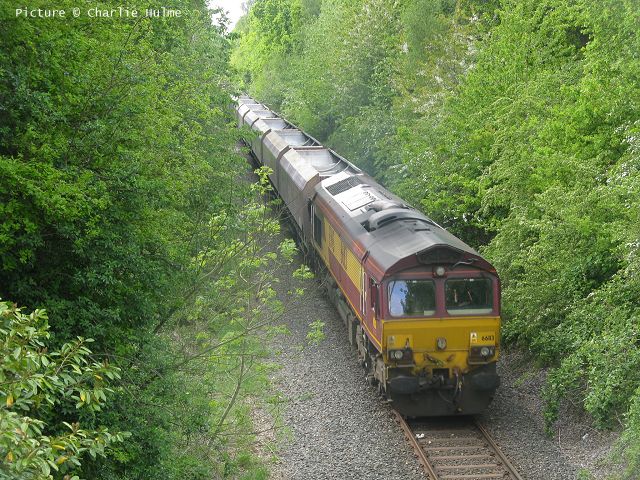
On 15 May 2016 at 15:35, 66 113 navigates the Lostock - Peak Forest empty wagons through the trees at Woodsmoor near Milepost 179, which survives as a reminder that this was once the Midland Railway's Manchester - London main line (Charlie Hulme).
The tree line? Report by Ken Robinson
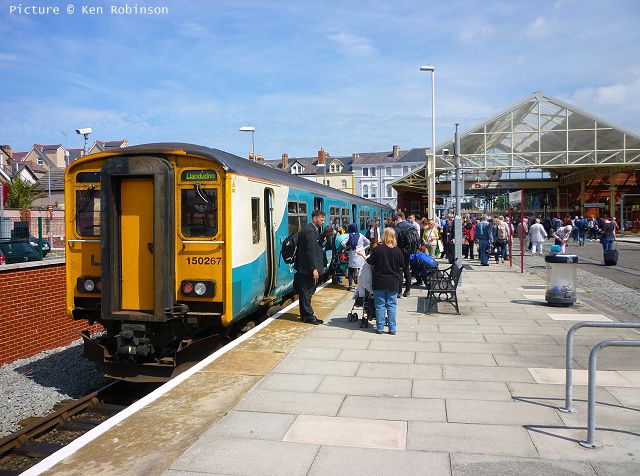
I travelled on the Conwy Valley line on 5 August - should it be called the 'tree line' - and saw almost nothing except trees out of the windows for around 75% of the journey. The Class 150 trains are also old and worn by now (30+ years) - a second class service indeed.The train, 150 267 on 2D15 - 11:35 from Blaenau Ffestiniog, was well patronised especially after Betws-y-Coed, and by Llandudno was almost packed full as the photograph shows.
A look at Barmouth Bridge - with Geraint Rowlands
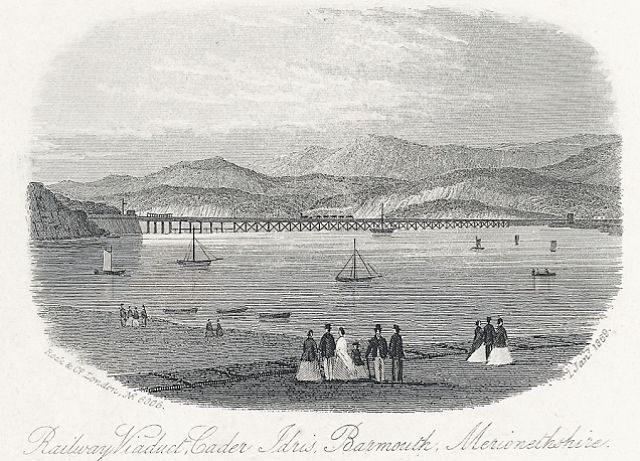
A recent family holiday in Barmouth gave me the opportunity of spending some time around Barmouth Bridge. The bridge, built in 1866, crossed the Mawddach estuary over 113 timber spans, with eight iron spans at the Barmouth end. One of these spans was a drawbridge which could be drawn back on wheels in order to allow tall masted ships to enter the estuary, as seen in the old print reproduced above.
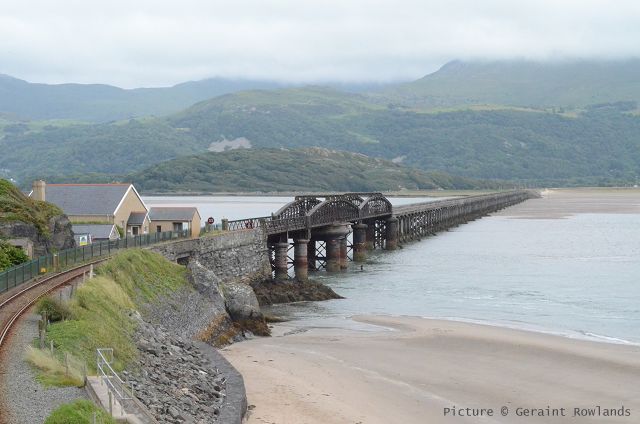
This portion was replaced with a swing portion from 1899, giving the bridge the shape we're familiar with today. The footpath alongside the railway wasn't part of the original design for the bridge, but was added soon after its completion, much to the annoyance of local ferrymen. A toll was charged to cross the bridge until 2013, when the last toll collectors left.
In 1980 the wooden nature of the bridge almost led to its downfall, when marine woodworm were found to have eaten into many of the wooden pillars. Heavy locomotives were banned immediately and BR considered closing the bridge in preference to the £2.5 million price tag of repairing it. Gwynedd Council, recognising the contribution of railway tourism to the area, opposed the closure, and campaigned for an EEC (later EU) grant to cover the cost of the repair, and further investment in the radio-based RETB signalling system, a forerunner to today's ERTMS.
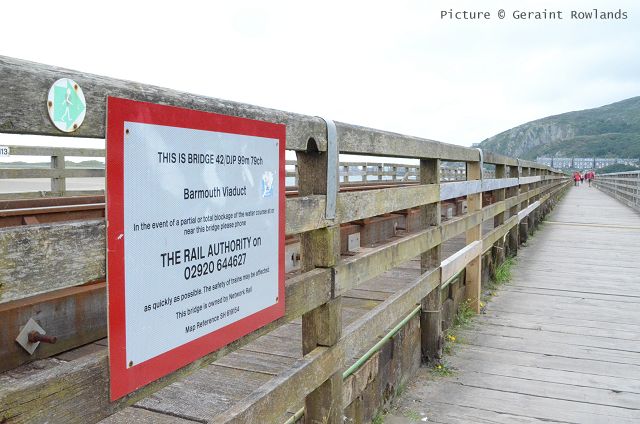
Gwynedd Council continue to contribute £30,000 to Network Rail toward the cost of maintaining the footpath, which forms part of the Wales Coastal Path and National Cycle Route 8, linking North and South Wales. A recent suggestion that the footpath might be closed to save money was met with harsh disapproval, with an on-line petition peaching 20,000 signatures within a week. The issue has since been dropped. [Quite right too.- Ed.]
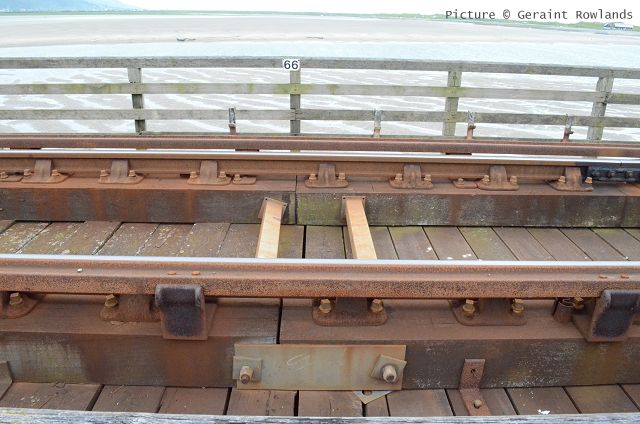
The track on the wooden portion of the bridge runs on longitudinal wooden sleepers, with metal cross-pieces used to maintain the correct gauge. Extra chairs hold guard rails outside the running rails, to stop a train falling off the bridge in the (unlikely) event of a derailment.
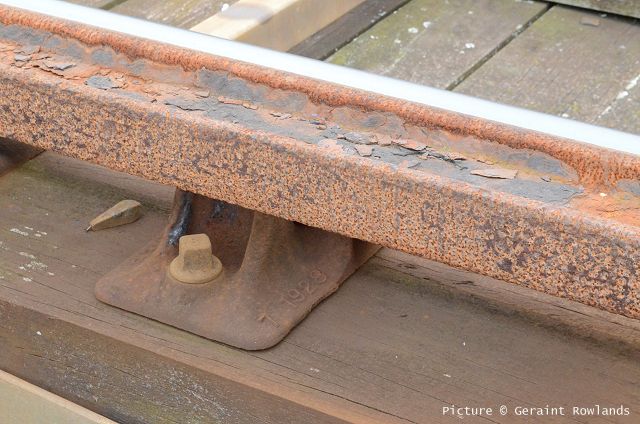
The guard rails are reused lengths of flat-bottom rail. The chairs for the running rails are also rather old: all the ones I saw were manufactured by the Great Western Railway, this example dates from 1928!
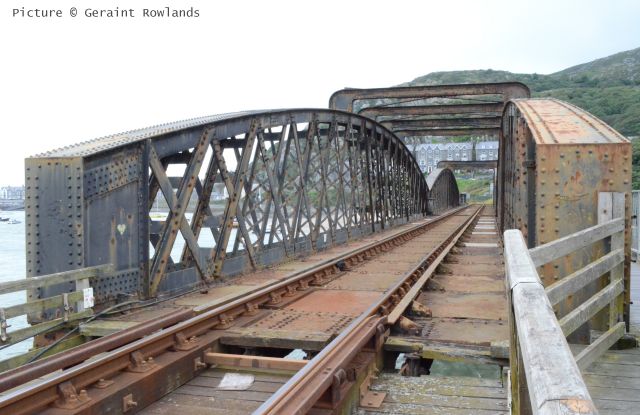
Wood gives way to steel as we approach the northern shore and the swing bridge section. Note that only the second arch is designed to swing open.
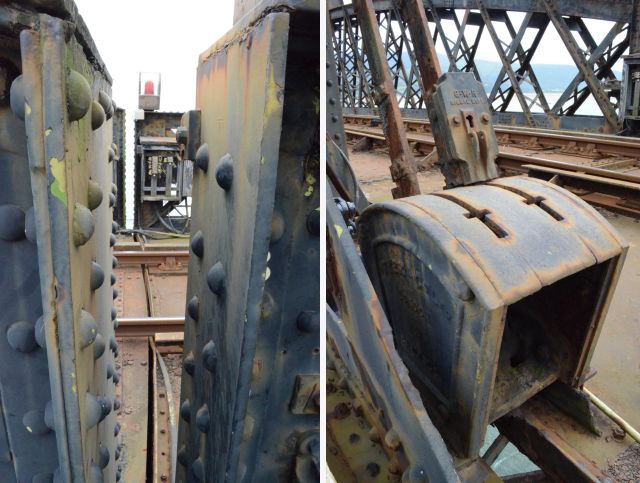
The swing portion of the bridge was last tested in 1987, shortly after reconstruction was completed. It's now out of use, as exemplified (above left) by the lack of break in the running tracks. On the swing portion is this pair of levers (above right), manufactured by Tyer & Co (of London and Carlisle), famous for their signalling equipment. One lever requires a key to operate, and the label 'G.W.R. Signal Department suggests it to be of similar vintage to the rail chairs on the wooden portion of the bridge.
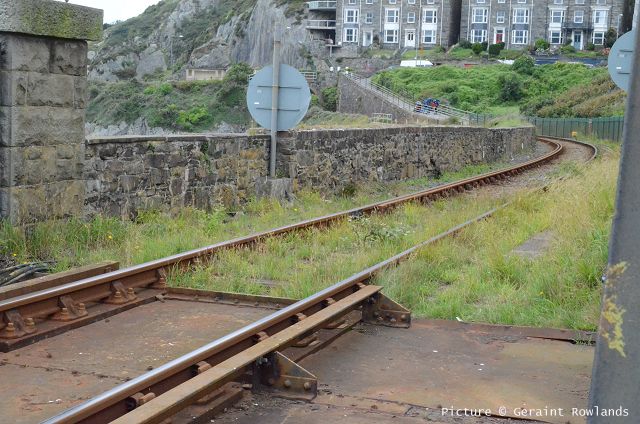
At the end of the bridge, the guard rails end, and a check rail starts shortly thereafter as we approach the short tunnel that leads to Barmouth. Whereas guard rails aim to retain a derailed train, a check rail is used on a curve or pointwork to avoid a derailment from happening in the first place. The footpath climbs and then stops abruptly at the busy A496 just where the pavement stops, meaning people must cross the road to walk into town. The Barmouth Viaduct Access Group (www.b-vag.org.uk) is campaigning for a safer walking route between bridge and town for what is a very popular attraction.
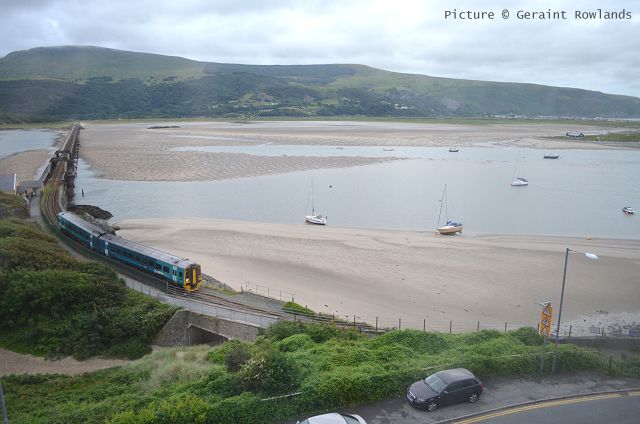
Finally, a view of of the first train of the day to Pwllheli, with the glorious view of the Mawddach Estuary beyond.
Cambrian notes
The problem on 30 July (see last issue) which prevented use of the telephones at user-worked crossings was, we hear, blamed on computer problems in the Machynlleth operation centre involving the 'concentrator' in the dedicated telephone network, which in turn has been traced to a failure of the Windows operating system (Which version of Windows us in use we cannot say). Staff from the supplier of the system had to travel from Nottingham to investigate; in the circumstances, it appears that the people involved did well to get the system back in use that afternoon; after a career in computer support, you compiler cannot help feeling sympathetic ...
On the evening of 3 August, a yacht collided with the bridge, which was then closed as a precaution resulting in the truncation of the last north- and southbound trains of the day pending an inspection, with bus replacements summoned for the long diversion via Dolgellau. Happily, normal service resumed the next day.
Steam Miscellany
Some scenes for the steam fan. And a note of caution: one of the steam pictures we inadvertently included a couple of weeks ago (now removed) was taken from beyond the end of a station platform, according to photographic evidence we've since received. Please, photographers, stay legal.
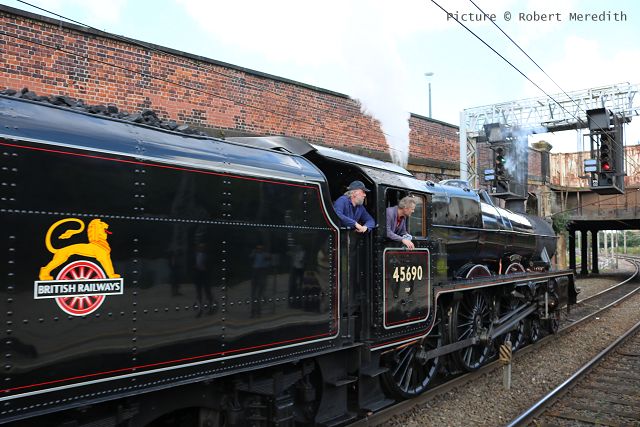
The fireman and locomotive owners representative take a breather while the boiler safety valves lift, as LMS Jubilee 45690 Leander leaves Preston with the 6 August 'Cumbrian Mountain Express' Euston to Carlisle, the trip was steam hauled Preston - Carlisle - Shap - Carnforth. Picture by Robert Meredith.
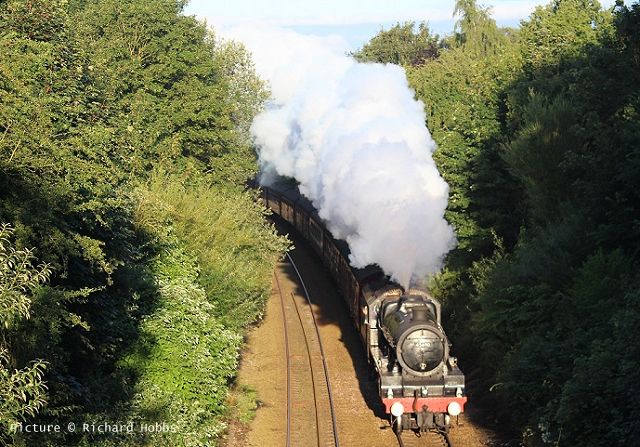
Another shot of the 'Coast to Coast Express' which ran last Saturday. Picture by Richard Hobbs, who notes: 'This one's from Bradburns Lane, Hartford, a difficult one as it's quite a deep cutting, but the early hour meant the sun was right on the nose!'
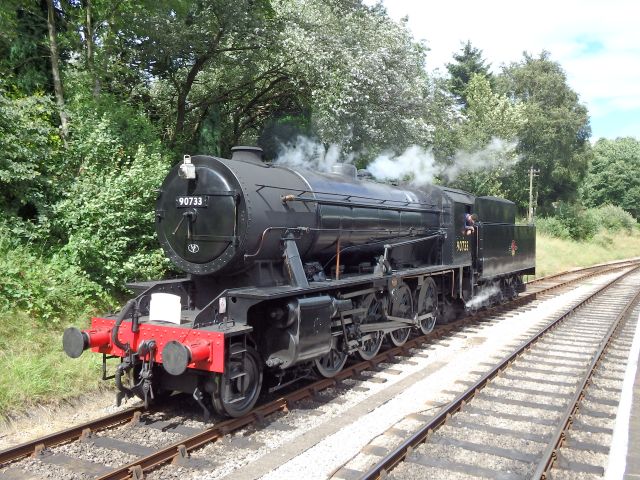
Ex-War Department loco 90733 runs around it's train at Oxenhope on the Keighley and Worth Valley Railway on 2 August in order to depart with the 3pm service to Keighley (Martin Evans).
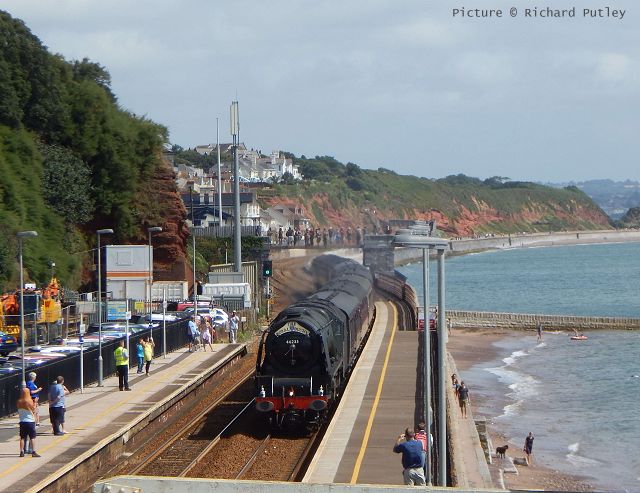
On Sunday 7 August Richard Putley ventured south to Devon and the famous sea wall which saw two steam trains in a day: 46233 Duchess of Sutherland on a Taunton - Par railtour ...
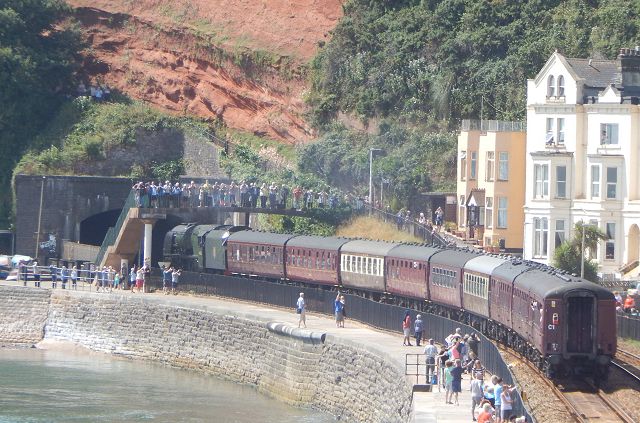
... watched by a good crowd ...
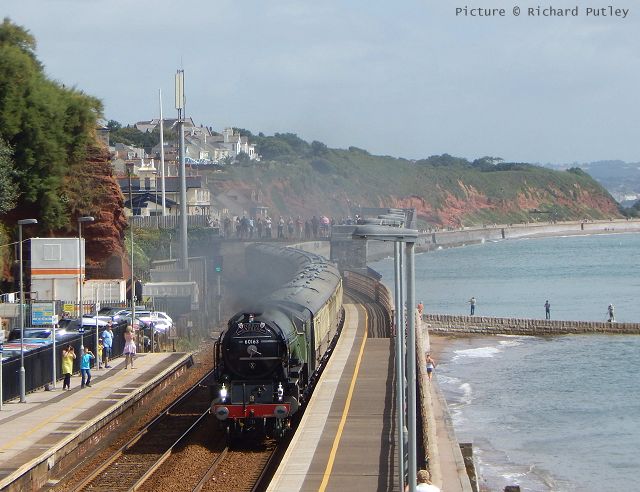
... and 60163 Tornado on the Bristol - Kingswear 'Torbay Express'.
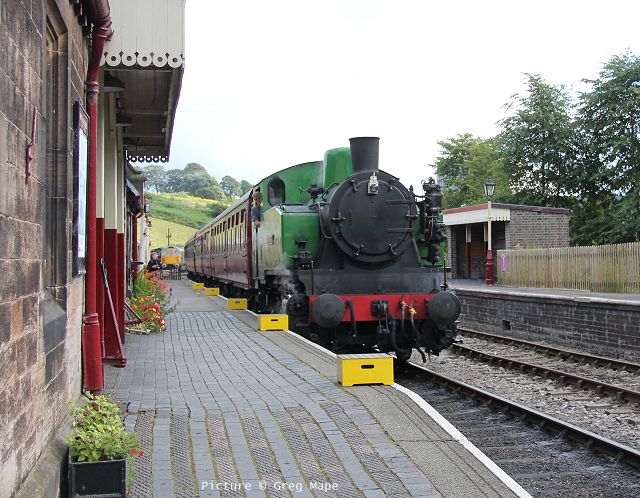
Cheddleton, Churnet Valley Railway on 3 August, with Polish 0-6-0 tank loco 2944 arriving (Greg Mape).
Chester to Wrexham doubling - still waiting
Here's a written question and answer obtained by Assembly Member Mark Isherwood, prompted by our contributor George Jones:
Mark Isherwood (North Wales): What is the current position with the delayed rail scheme to improve train times between Wrexham and Chester, including doubling the rail track between Rossett and Saltney junction? When do you anticipate that the new track between Saltney and Rossett will now be commissioned?Work on this began in June 2014 for completion by late 2015, according to the Network Rail website; the track itself has been finished for some time, the continuing delay seems to involve signalling cables.
Ken Skates (Cabinet Secretary for Economy and Infrastructure): Network Rail have indicated that they will carry out the final commissioning work during late March and early April 2017 ... they have indicated that this element will be commissioned by 2 April 2017. Network Rail and Arriva Trains Wales are currently working together to realise the timetable changes made possible by this investment.
Welsh Mountaineer extra
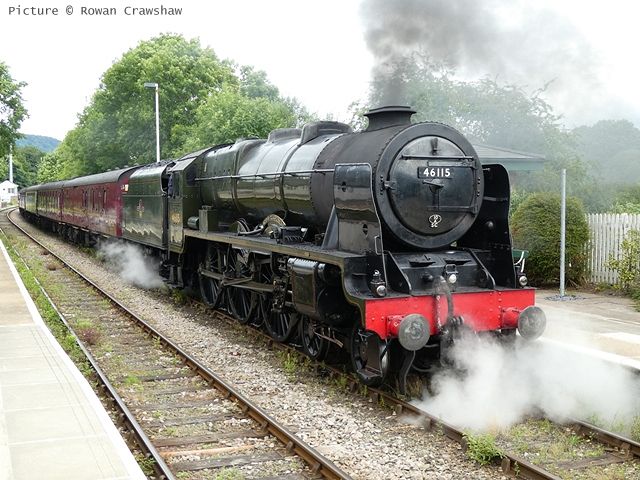
A few more pictures, and some feedback from readers, about the exploits of 46115 Scots Guardsman on the Conwy Valley line on 26 July. Above, the outbound train waits at North Llanrwst (Rowan Crawshaw).
Regarding our comments about the loco running in reverse from Chester to Llandudno Junction, Ian Bowland writes: 'As far as I am aware, steam locomotives run boiler-first up the
inclines and tender first down, in order to prevent the firebox backheads from being starved of water. Being directly over the fire, the metal could suffer from over-heating and possible distortion or worse - very expensive. Such running is regularly seen on the Keighley and Worth Valley line. '
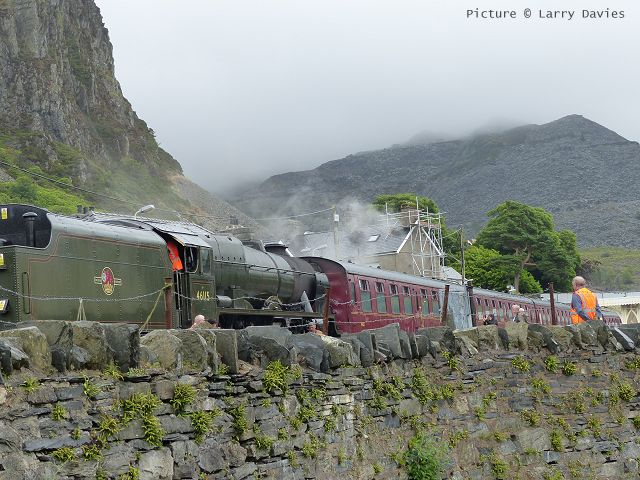
At Llandudno Junction, the train crew had to make the shunting moves in the rain, photographed by Larry Davies, who writes:
We believe there have been two previous occasions when 'Scots' traversed the Conwy Valley line. Firstly in July/August 1960 46143 The South Staffordshire Regiment worked a 13-coach special from the Midlands to Betws-y-Coed in conjunction with a youth festival that was being held there. The Scot was to be replaced at Llandudno Junction but a tank engine failure saw the Scot hastily turned and head the train down the Conwy Valley.So it seems that 46115 is the first of the class to tackle the difficult upper section of the line - unless readers know differently.
Secondly, in early 1963, Llandudno Junction (6G) shed must have been short of freight locos as they used one of their 'Scots', 46165 The Ranger (12th London) Regiment on the branch goods as far as Betws-y-coed.
North Wales Coast home page | Archive | Previous Notice Board